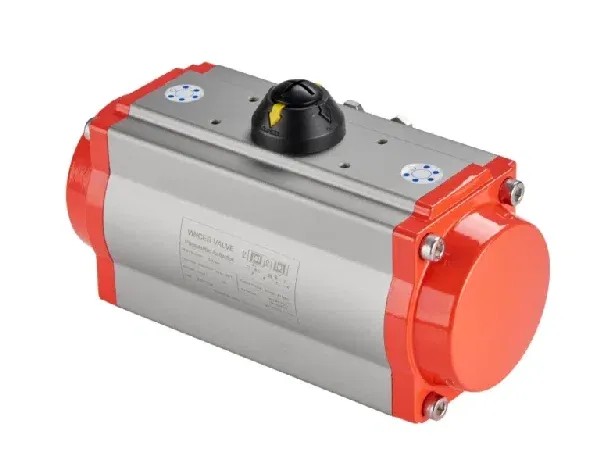Introduction
We are a Leading Control Valve Manufacturer in China, Delivering High-Quality Valves and Precision Control Actuators Customized for a Wide Range of Industrial Applications.
In the world of automation and mechanical engineering, actuators are essential devices that convert energy into mechanical motion. Among the various types of actuators, pneumatic and electric actuators are two of the most widely used. Each offers unique advantages, making them ideal for different applications.
This article explores the working principles, key differences, advantages, and disadvantages of pneumatic and electric actuators. It also provides guidance on how to choose the right actuator for your specific project.
What is a Pneumatic Actuator?
A pneumatic actuator is a device that uses compressed air to create mechanical motion. Commonly referred to as pneumatic cylinders, air cylinders, or air actuators, these devices are used to generate linear or rotary motion depending on the design.
How It Works
A pneumatic actuator operates by introducing pressurized air into a chamber. As the air pressure increases, it forces a piston or gear to move. This movement may occur in a straight line (linear actuator) or in a circular path (rotary actuator).
Advantages:
- Simple construction
- Quick response time
- Easy maintenance
- Ideal for harsh or explosive environments
Limitations:
- Requires a continuous air supply
- Efficiency depends on air quality and pressure stability
- Limited precision and control
What is an Electric Actuator?
An electric actuator uses an electric motor to produce motion and perform tasks such as lifting, rotating, or clamping. These actuators are prized for their precision, programmability, and energy efficiency.
How It Works
An electric actuator converts the motor's rotary motion into linear motion using a helical screw mechanism and a ball screw nut. As the motor rotates clockwise or counterclockwise, the screw moves the nut—and attached piston rod—forward or backward. A feedback system provides positional information, enabling advanced motion control.
Advantages:
- High precision and repeatability
- Programmable motion profiles
- No need for external air supply
- Suitable for complex automation systems
Limitations:
- More complex and costly
- May require protection in harsh environments
- Higher initial cost
How to Choose the Best Actuator for Your Project
When selecting between pneumatic and electric actuators, consider the following factors:
1. Application Requirements
- Type of motion: Linear or rotary?
- Required force and speed
- Precision needs
Use electric actuators for high-precision, multi-position tasks. Choose pneumatic actuators for rapid, high-force operations.
2. Environmental Conditions
- Pneumatic actuators are more tolerant of dust, moisture, and extreme temperatures.
- Electric actuators may require enclosures or cooling systems in harsh environments.
3. Energy Efficiency
- Electric actuators are more energy-efficient in intermittent or precise motion tasks.
- Pneumatic systems may be less efficient due to air leakage and continuous compression.
4. Maintenance and Lifespan
- Pneumatic actuators have fewer moving parts and are easy to service.
- Electric actuators have longer service lives but require occasional electronic component checks.
5. Budget Constraints
- Consider total cost of ownership, not just initial purchase price.
- Factor in energy costs, maintenance, and integration needs over the system's lifetime.
6. Integration and Control
- Electric actuators integrate seamlessly with digital control systems, offering better data feedback and automation capabilities.
Conclusion
Both pneumatic and electric actuators serve critical roles in industrial automation, each excelling under different conditions. Pneumatic actuators are ideal for high-speed, high-force tasks in rugged environments, while electric actuators offer precision, flexibility, and efficiency in modern, controlled systems.
Choosing the right actuator depends on understanding your application's demands and aligning them with the actuator's capabilities. By considering motion type, force, environment, energy efficiency, and budget, you can make a well-informed decision that enhances performance and reliability. Know more about Google SEO Directory





Comments